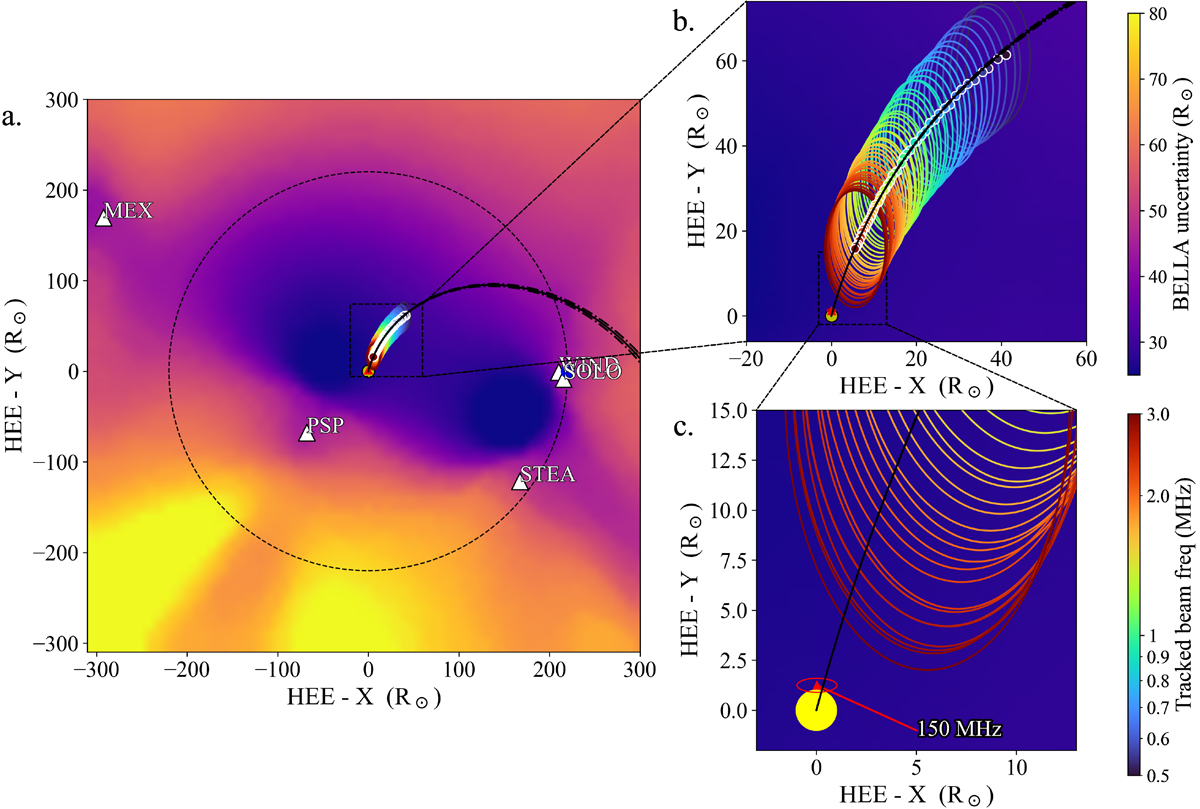Fig. 4.

Download original image
Multilateration of the Type III when three spacecraft (a; from Fig. 3d), four spacecraft (b), and five spacecraft (c; also shown in Fig. 5a) are used. All spacecraft configurations were sparse, and the radio sources’ path was located in regions of high confidence. Unlike the spacecraft configuration (see Fig. 3), the number of spacecraft had a relatively small impact on the precision. However, there was a notable improvement in accuracy, suggesting that a redundant number of spacecraft contribute towards cancelling out the errors from the data extraction procedure.
Fig. 5.
Multilateration of the Type III sources using BELLA with five spacecraft. (a) Bird’s eye view of the ecliptic plane showing the spacecraft configuration. The spacecraft configuration was relatively sparse and generated a large area of high confidence in which the BELLA sources were found. (b) Zoomed-in view of panel (a), showing a close up of the sources’ apparent location in the frequency range 0.5–3 MHz. A Parker spiral was fitted to the centroids of the BELLA sources. (c) Zoomed-in view of panel (b) showing a clear view of the results obtained by the NRH 150 MHz interferometric imaging compared to the BELLA sources. The Parker spiral obtained from the BELLA sources was found to be consistent with the uncertainty region of the interferometric imaging.


Current usage metrics show cumulative count of Article Views (full-text article views including HTML views, PDF and ePub downloads, according to the available data) and Abstracts Views on Vision4Press platform.
Data correspond to usage on the plateform after 2015. The current usage metrics is available 48-96 hours after online publication and is updated daily on week days.
Initial download of the metrics may take a while.


